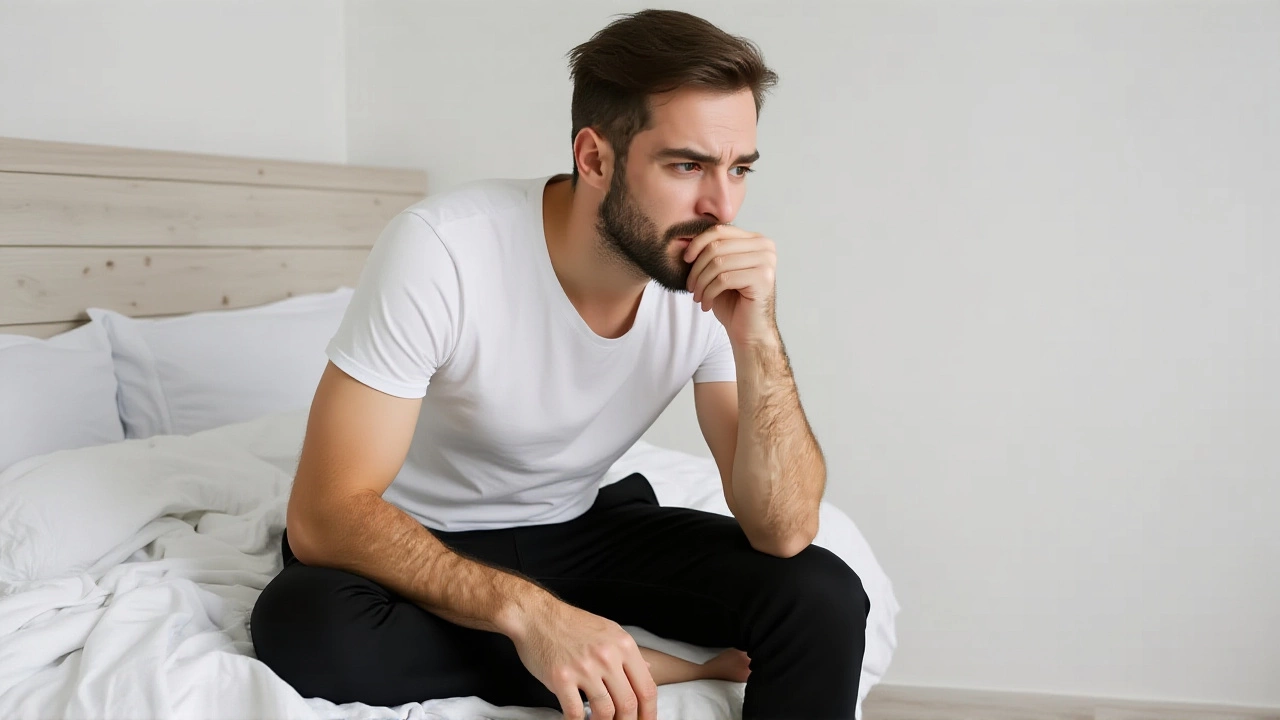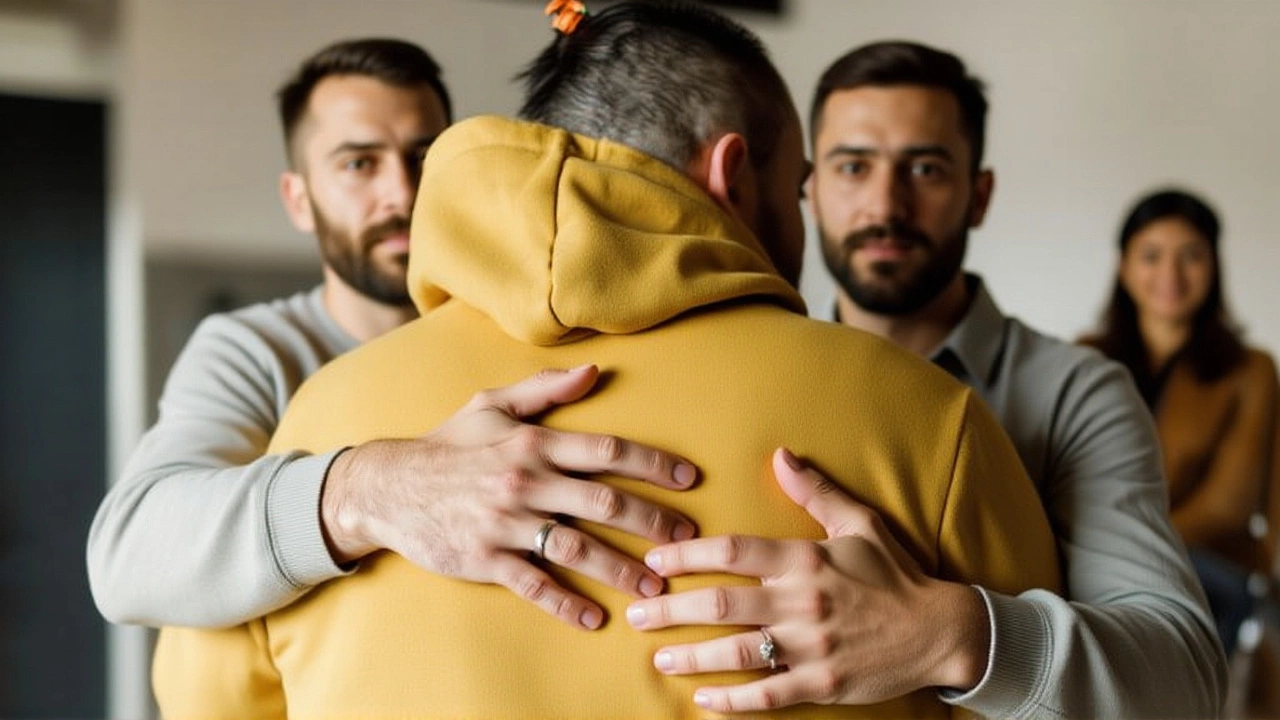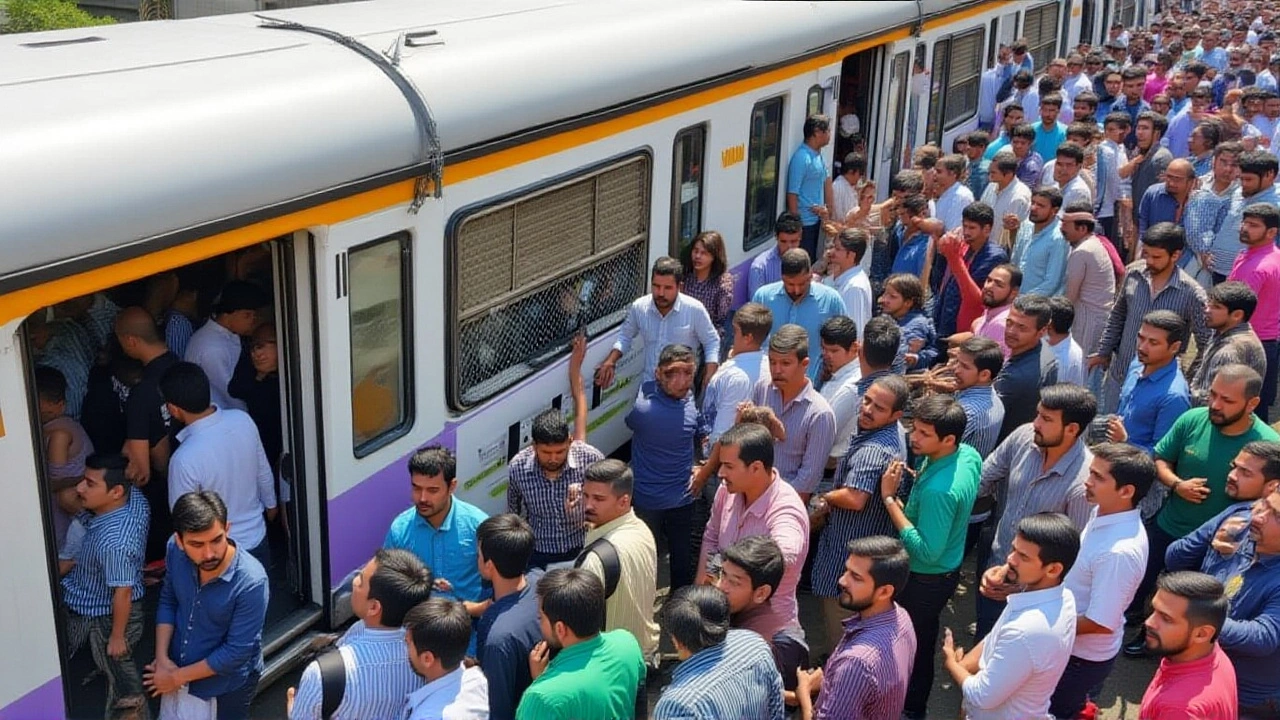On November 19, 2025, International Men’s Day in Mumbai laid bare a silent epidemic: urban Indian men, especially Gen Z and younger millennials, are crumbling under pressures no one talks about. At Italk Therapy in Goregaon, clinical psychologist Dr. Nikhila Deshpande offered a raw, clinical perspective — not platitudes. The day’s observance wasn’t about slogans. It was about a man sobbing alone at Borivali railway station, captured on video and viewed millions of times. That moment? It wasn’t an anomaly. It was the norm.
The Three Burdens Men Carry
Dr. Deshpande doesn’t mince words. She says men’s mental strain comes from three places: a real personal limitation, a perceived flaw amplified by others’ judgments, or the exhausting belief that they must constantly upgrade themselves. It’s not just about being strong. It’s about being perfect — at work, at home, in the gym, on Instagram. Social media doesn’t just reflect society’s standards; it weaponizes them. "The Internet triggers envy, rage, stress," she says. "And men don’t have the tools to process it."
Unlike women, who often turn to friends for catharsis, young Indian men rarely do. "They bottle it up," Dr. Deshpande explains. "And suppression doesn’t disappear. It turns into insomnia, migraines, heart palpitations — or worse." The Economic Times confirmed the stakes: suicide rates among men in India remain distressingly high, with stigma acting as the most effective barrier to help. Many never walk into a therapist’s office because they fear being seen as weak.
Workaholism as a Mask
One of the most insidious coping mechanisms? Workaholism. The mid-day report found that many men treat overtime like a moral obligation — proof they’re "worth something." They clock 12-hour days not because they love their jobs, but because their identity has been reduced to productivity. A 28-year-old IT engineer from Andheri told a reporter anonymously, "If I stop working, I stop existing. That’s the script I was given."
It’s not just career pressure. The mid-day article listed a brutal checklist: looks, fitness, career, productivity, dating, relationships. Every one of these is now a metric to be optimized — often against curated, unrealistic online images. "You’re not competing with your colleague," Dr. Deshpande says. "You’re competing with a Photoshop filter. And you’re losing. Every day."
The Silence at Borivali
The viral video from Borivali railway station didn’t show a dramatic breakdown. Just a man, head in hands, shoulders shaking, unnoticed amid the rush of commuters. Content creator Tilak Dubey called it "the quietest scream in modern India." Within hours, #SilentHeroes and #MenWhoCarrySilently trended nationwide. But trends don’t fix systems.
Even corporations joined the conversation. Probus Insurance posted on Instagram: "To the men who rarely stand in the wind." The hashtags were sincere. But real change requires more than branded empathy. It requires access — affordable therapy, male-friendly counseling spaces, workplace mental health policies that don’t punish vulnerability.

What Works? Boundaries, Not Broadcasts
Dr. Deshpande’s advice isn’t about forcing men to "open up." She knows that’s not how most of them operate. Instead, she recommends two things: set boundaries and introspect well. That means saying no to extra projects. Unfollowing accounts that trigger shame. Scheduling 10 minutes a day to sit with your thoughts — no phone, no noise. "Whether you talk to someone else is your choice," she says. "But you owe it to yourself to understand what you’re carrying."
She’s also pushing for gender-specific approaches. "You don’t treat a broken leg the same way you treat a sprained ankle," she argues. "Why do we expect men to heal emotionally the same way women do?" Her clinic in Goregaon now runs small-group sessions for men, using journaling, movement, and peer accountability — not talk therapy alone. Early results show a 40% drop in reported panic attacks over six months.
What’s Next?
India’s mental health infrastructure is still catching up. Only 0.75 psychiatrists per 100,000 people — far below the WHO’s recommended 3.0. And most are concentrated in cities like Mumbai, leaving rural men with virtually no access. The government’s National Mental Health Program has yet to address male-specific stigma in its campaigns.
But momentum is building. A coalition of NGOs, including Italk Therapy, is drafting a proposal for mandatory mental health modules in corporate HR training — modeled after safety protocols. Meanwhile, schools in Maharashtra are piloting "Emotional Literacy" workshops for boys as young as 14. It’s slow. But it’s real.

The Bigger Picture
International Men’s Day isn’t about erasing women’s struggles. It’s about acknowledging that masculinity, as it’s currently constructed, is a death sentence for too many. In 2024, 74% of suicide deaths in India were male, according to the National Crime Records Bureau. The numbers don’t lie. The silence does.
Dr. Deshpande ends every session the same way: "You don’t have to be strong for everyone. Just be honest with yourself. That’s the first step out of the dark."
Frequently Asked Questions
Why don’t Indian men seek therapy even when they’re struggling?
Cultural stigma frames emotional vulnerability as weakness, especially among men raised to "be the rock." Many fear professional or social repercussions — losing respect, being labeled "soft," or even affecting marriage prospects. A 2024 survey by the Indian Psychiatric Society found 68% of men avoided therapy due to shame, even when experiencing severe anxiety or depression.
How does social media specifically worsen mental health for young Indian men?
Platforms like Instagram and TikTok bombard men with idealized versions of success — muscular physiques, luxury lifestyles, flawless relationships. A 2025 study by Mumbai University found that men aged 18–29 who spent over 3 hours daily on social media were 2.3 times more likely to report feelings of inadequacy. The constant comparison triggers dopamine-driven cycles of envy and self-criticism, with no outlet for processing those emotions.
What practical steps can men take to manage emotional stress without therapy?
Dr. Nikhila Deshpande recommends three: daily 10-minute journaling to name emotions without judgment, setting firm work-life boundaries (e.g., no emails after 8 PM), and physical movement like walking or weightlifting to release pent-up stress. These aren’t fixes — but they create space for self-awareness, which is the foundation of healing.
Are there any government programs addressing male mental health in India?
Currently, no national campaign targets male-specific mental health stigma. The National Mental Health Programme focuses broadly on depression and suicide prevention but lacks gender-sensitive messaging. However, pilot programs in Maharashtra and Kerala are testing male-only peer support groups in workplaces, with early success. Advocates are pushing for inclusion in the upcoming 2026 Mental Health Policy revision.
How did the Borivali railway station video impact public perception?
The video, viewed over 12 million times, shattered the myth that men don’t cry. It sparked over 800,000 comments on Twitter and Instagram, with many sharing their own hidden struggles. Corporate sponsors like Probus Insurance shifted from performative hashtags to funding free counseling hotlines. The moment became a cultural pivot — proving that visibility, even in silence, can break isolation.
What’s the long-term goal for organizations like Italk Therapy?
Italk Therapy aims to train 500 community mental health ambassadors — mostly men — in 10 major Indian cities by 2027. These ambassadors, often former clients, will offer peer support in local language, reducing stigma through familiarity. The goal isn’t to replace therapists, but to make the first step — asking for help — feel less like surrender and more like solidarity.







Write a comment